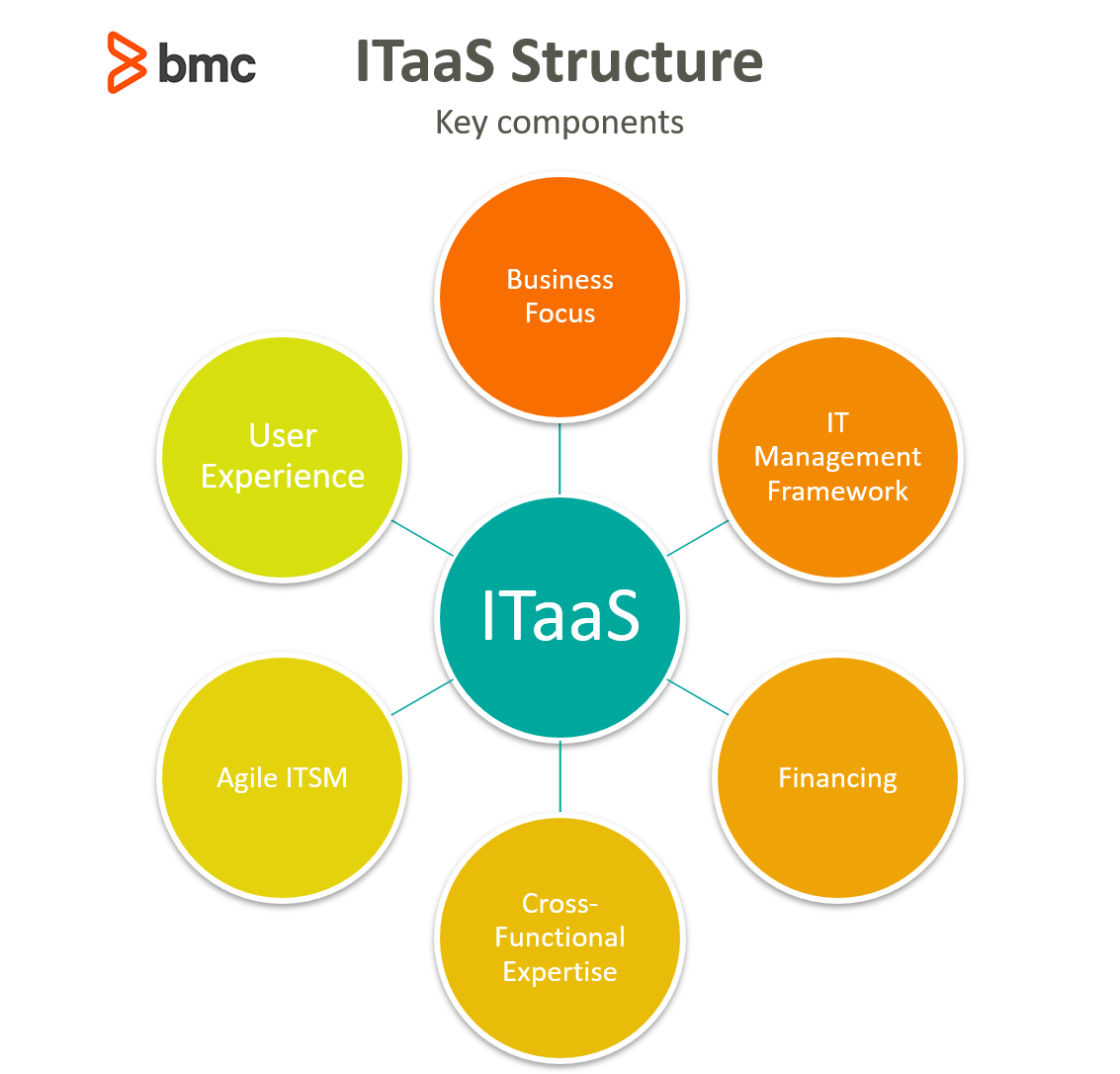IT departments have traditionally operated as internal experts to the wider organization, fixing IT issues, procuring technologies, and working to keep in-house systems alive and stable. With the proliferation of cloud technologies, these responsibilities are now expected from external cloud vendors. This shift has transformed the requirements for internal IT departments. IT is now expected to operate as a business unit that assists the organization and its users in leveraging commoditized IT services in line with organizational goals.
What is ITaaS?
In the same ways as cloud computing services, enterprise IT expertise and services offered by the internal IT department can be consumed “as a service”. This doesn’t mean we’ve simply shifted IT service offerings to the cloud—not at all.
IT as a Service (ITaaS) can be seen as a transformative operational model that allows a line of business or user to consume Information Technology as a managed service. The services are cataloged, allowing users to consume and pay only for the services they require. This operating model can be adopted by internal IT departments or external vendors.
From a user perspective, the experience of consuming ITaaS is similar to that of visiting a high-end restaurant specialized in a variety of cuisine. A rich selection of menu items is well cataloged with exact details on pricing and ingredients. The ordered items are delivered in an exact quantity within reasonable time. The guest is only responsible for consuming the food items, and the associated end-to-end services from procuring raw items to cleaning the table for next guests is managed by the service provider, the restaurant.
ITaaS works follows a similar approach: a variety of services, configuration settings, framework guidelines and technologies are made available to address the unique demands of each user and line of business. Consumers have a variety of choices and can employ IT solutions prepared to meet the specific demands, which have already been assessed and prepared for, but the ITaaS service provider. They are no longer the tech folks focused on putting out the fire when an end-user fails to employ a required IT service. Instead, it’s focused on addressing the unique requirements of internal consumers, allowing them the options to choose the best available resources and solutions, along with managing the entire experience lifecycle associated with it.
ITaaS shifts behaviors—not technology
The focus of an ITaaS model is to transition from a generalist service provider behavior of internal IT departments to specialized IT service offerings tailored to specific industrial and organizational use cases. Like any cloud service, the products are standardized and simplified to ensure transparency, operational efficiency, and consistent service quality.
ITaaS is not a technology shift. It doesn’t involve new technology deployments and interfaces, but a transformative approach to operational and organizational behavior of an IT service provider. It builds from the principles and best practices of ITIL and ITSM frameworks and engages IT departments as service providers offering standardized, consolidated, and virtualized IT services.
Benefits of ITaaS
IT departments in large enterprises typically operate as a single point of contact and service provider to a large internal user base. With the ITaaS model, organizations can employ the same services without operating an IT department in-house. This model is particularly suitable for SMB firms operating on a limited budget and resources. For large enterprises, internal IT departments can take the role of an ITaaS vendor to internal users and lines of business. This requires decoupling of IT shops from the organizational structure, introducing new roles and responsibilities, as well as a cultural change in the way IT interacts and serves its internal users.
The ITaaS model offers a simple concept: IT services are consumed effectively when end-users are given sufficient choices between services—and charged on the consumption basis. In this context, ITaaS vendors are responsible for maintaining a vast library of IT solutions and services required by end-users. ITaaS vendors take the role of managed service providers and brokers. With the service-oriented model, they manage and orchestrate the IT service lifecycle: from identifying a user requirement to supporting the final outcome of an effectively delivered service. It includes tasks such as finding available solutions, negotiating SLAs, and helping users make well-informed decisions when selecting a service.
Putting ITaaS in place
To summarize, the following requirements should be addressed to develop an effective ITaaS structure for your IT department:

- Business Focus: The operations and service architecture of an ITaaS vendor is designed around the business requirements of the organization instead of the technical projects and IT infrastructure running on-premise.
- IT Management Framework: The leadership should support decisions on IT services with a focus on business and end-user requirements instead of individual projects and technology assets.
- Financing: The pricing of an ITaaS offering should justify the promised cost savings and value. As a broker and managed service provider, ITaaS providers may have a limited range of profitability when customers can purchase a service directly from the vendor.
- Cross-Functional Expertise: IT departments transitioning to the ITaaS model will require expertise with business and sales knowledge to connect the right user with the right external provider. Traditionally, IT departments comprise IT specialists with little contributions to business decisions associated with the choice of new technology deployment.
- Agile ITSM: Since ITaaS is focused on the process of serving user requests and aligning IT with business, it must adopt an appropriate ITSM framework that enables agile and effective business operations.
- User Experience: ITaaS should be able to offer an improved user experience as compared to traditional IT departments. The catalog listing ITaaS offering should be exhaustive with transparent pricing models. The managed services should ensure that end-user requirements are addressed effectively across the service lifecycle.
The benefits of adopting an ITaaS model are simple. Unlike traditional IT departments, ITaaS providers serve the important goal of aligning business with IT. The services can scale in response to changing business requirements, since the IT solutions are primarily cloud-based. The cost structure for each service is transparent, allowing for effective decision-making. The OpEx model allows organizations to use large capital financing for more urgent matters, instead of merely keeping the IT systems running.
Additional resources
- Service Catalogs vs Service Portfolios: What’s The Difference?
- How To Evaluate Your Organization’s ITSM Needs
- Accelerating Agile Delivery with ITSM Integration







